





They’ve called it the “Ultimate Driving Machine” for decades, appealing to auto enthusiasts with communicative steering, firm yet compliant suspensions, legendary engines, and high build quality. But BMW’s core audience, since the introduction of the popular X5 sport utility in 1999, has wandered away from the track and into the women’s department at Nordstrom.
That brings us to my somewhat disappointing service loaner, a 2018 BMW 430i convertible (F32).
In the year that I’ve owned my 2008 328i convertible (E93), I’ve endured three potentially life-threatening recalls, one for a Takata airbag that could fling metal shards at my face, and two for electrical components that could catch fire. The Takata recall affected the entire industry while the fire issues took forever for BMW to acknowledge, even as stories of spontaneously combusting cars made national headlines.
With the frequency of long-distance trips I take each month, I was tired of waiting for a fix. I called BMW corporate and my local dealer, Erhard BMW, to discuss providing me with a loaner for a few weeks while we waited for the updated parts to become available.
Erhard asked me to sign a document stating that I’d keep the car parked, not driving it until the parts were ready, and in exchange they’d provide me with a car from Enterprise at BMW’s cost of $69/day (enough for a pretty nice full size car).
According to messages posted on BMW forums, some people have been in rentals since last winter, costing BMW thousands to Hertz and Enterprise.
Fortunately for me, Erhard found the updated parts the same day (they were intended for another customer but he was in a wreck), providing me with a BMW loaner instead of a rental car.
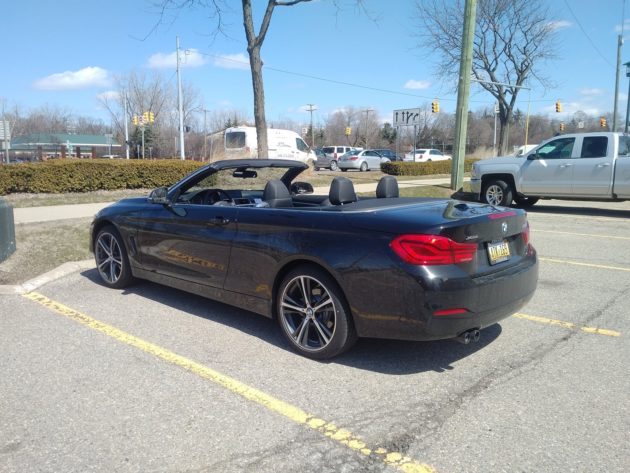

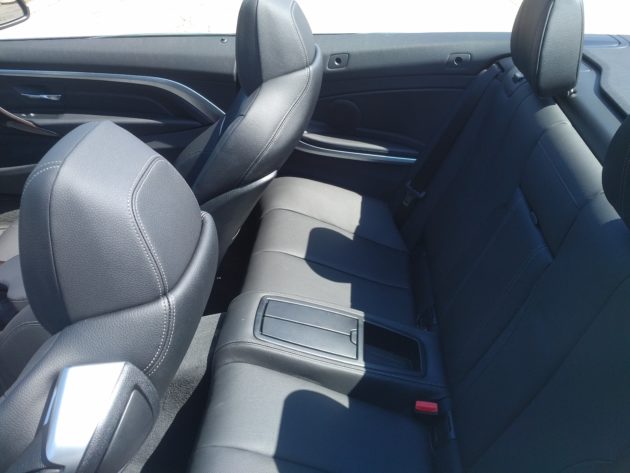
As the service guy pulled up, I gawked. Dripping in jet black paint with 19” wheels and red-stitched seats, it was an attention-grabbing look earning a stream of compliments from strangers for the twenty four hours it was in my possession.
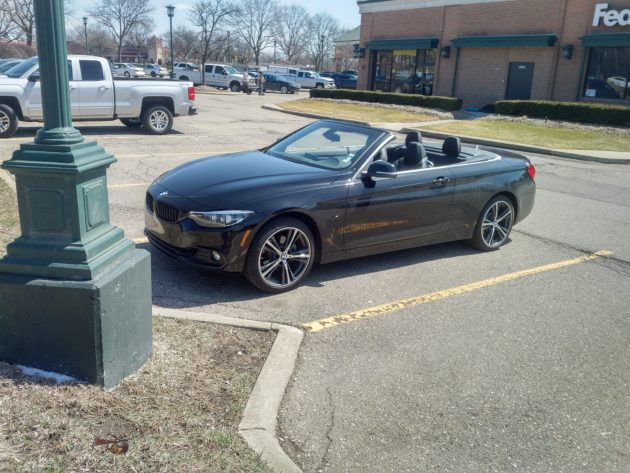
“Now that’s a real car!” observed a guy outside the liquor store. A child waved and yelled “Nice car!” as I cruised through my neighborhood. Someone at work said, “Wow, is that your ride?” to which I replied, “Nah, it’s a service loaner.”
And while the more aggressive curves and lines drew stares, it was lacking the clean, understated elegance of my E93. Also, the pedestrian-friendly, bluntly upright nose is slightly jarring from certain angles and the whole body seems taller overall. I could have misperceived its dimensions, but I noticed the trunk opening with the top stowed was quite a bit taller (thus, significantly more useful), confirming what I suspect.
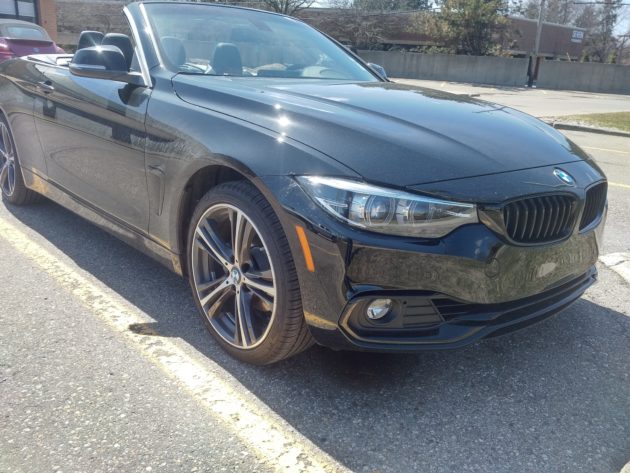
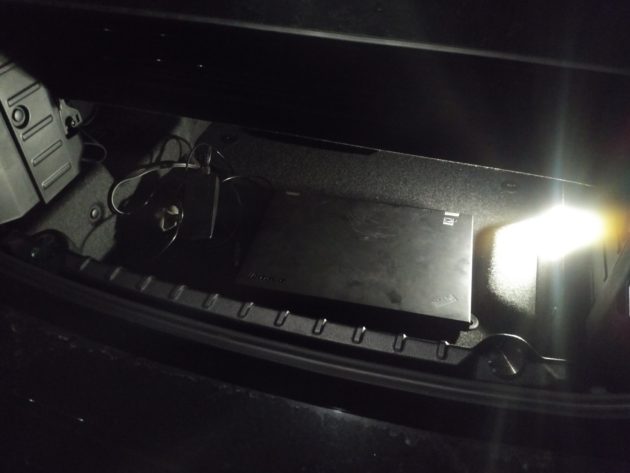
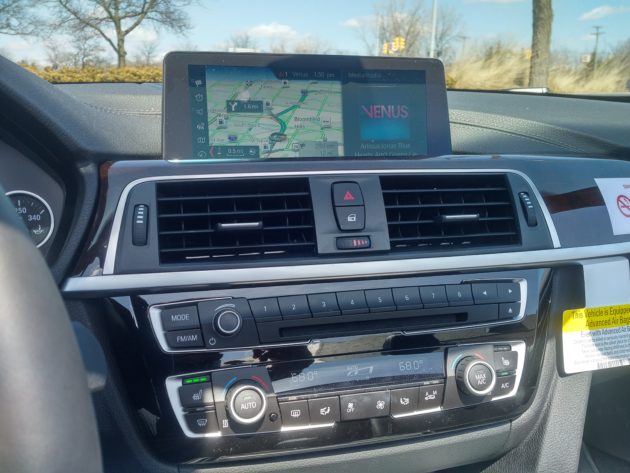
Inside it’s all standard-issue BMW equipment including the infamously awful electronic shifter. Instead of moving a physical gear lever from P to D, you push and hold a button while nudging a stump and forth. To place it in park, you hold another button while nudging upward.
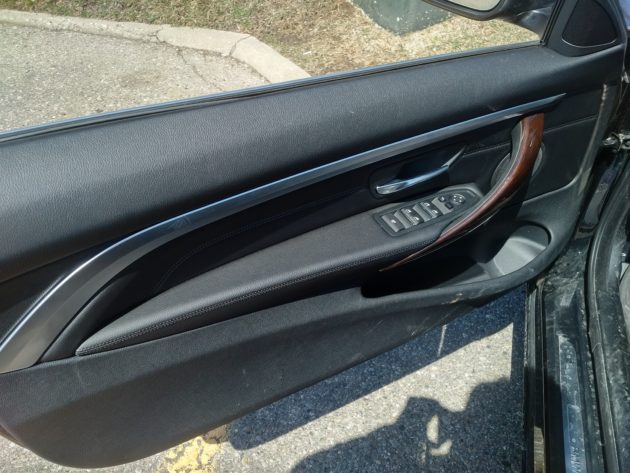
A few years ago I was in a 2013 BMW X5 diesel with the same shifter, backed up to a loading dock at a warehouse. I thought I had it in Park when I opened the door and stepped out. The moment I took my foot off the pedal the vehicle started rolling. I hopped in just in time, hit Park again, and since then I’ve been deeply distrusting of BMW’s automatic shifters.
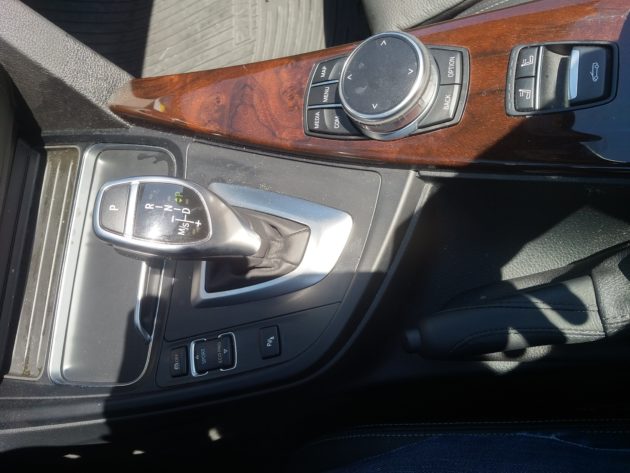
It’s a design that doesn’t save space in the center console (Lincoln’s push-button shifter is clever for this reason) and adds a layer of complication to an otherwise simple task. A similar shifter used in Jeep and Chrysler products recently killed and injured several people, sparking lawsuits.
They did, however, improve the turn signals (a seldom-used feature in most BMWs), returning to a traditional stalk that stays up when you click upward and stays down when you click downward, no longer returning to the center unless the signals are off.
Additionally, iDrive introduces physical shortcut buttons for navigation, communications, and media controls. Voice recognition for address input works smoothly, even with the top open at low speeds, while a touchpad built into the control knob allows for character input with handwriting recognition.
Kudos to BMW for fixing the annoyances that have plagued the brand for a decade. The only thing left to mend is that damn shifter.
Elsewhere, the interior is predictably BMW with controls cleanly laid out and logically placed. Cruise control moves from an awkwardly located stalk to the front of the steering wheel, as Japanese cars have done since the 1980s. Buttons, knobs, and sliders feel nice though the seats and door trim feel like they were downgraded slightly. That’s likely because this car is equipped with “Sensatec” vinyl while mine has Dakota leather. The red stitching is a lively touch however and the satisfying materials on and around the steering wheel are a massive upgrade over the slippery, hard leather and scratch-prone plastisol in my E93.

Gauges stick to tradition, featuring crystal clear analog needles with supplemental color LCDs within the cluster for entertainment and vehicle information. There is, however, a peculiar “Efficient Dynamics” gauge that swings back and forth as you press and release the throttle, lighting up a battery when the throttle is fully released.
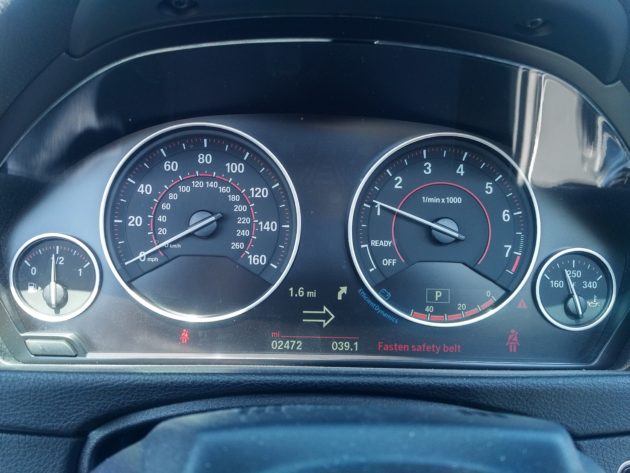
No, this isn’t a hybrid. Rather, it’s an alternator with a clutch that disengages to slightly reduce parasitic load and reengages while coasting to charge the battery. As a result, you may gain one quarter of a mile per gallon or less. Complication for complication’s sake is a trademark of German engineering.
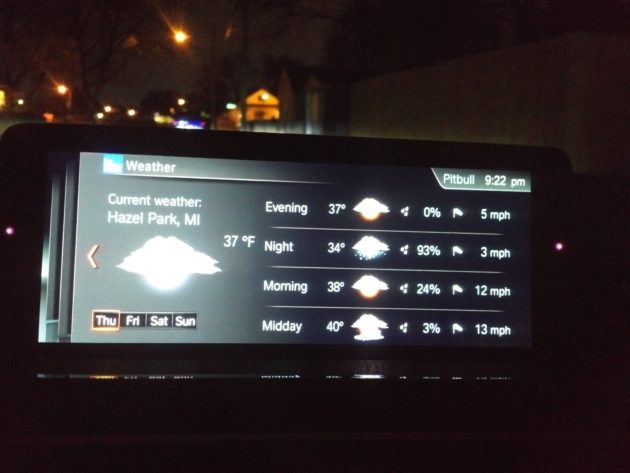
As an added bonus, iDrive will download news stories and read them to you, something I might enjoy on a long drive through a barren, empty place like Illinois or Nevada. The weather forecast is a nice touch too, a good way to know whether you should park with the top up or down. Sure, my Blackberry has the same information, but having it available on board adds an air of luxury — “My car reads me the Wall Street Journal. Does yours?”
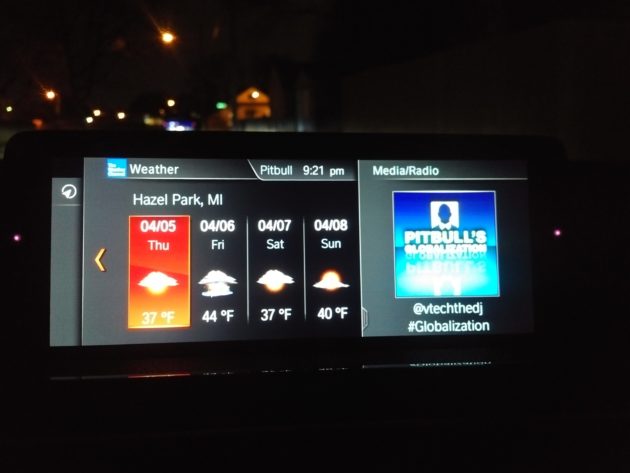
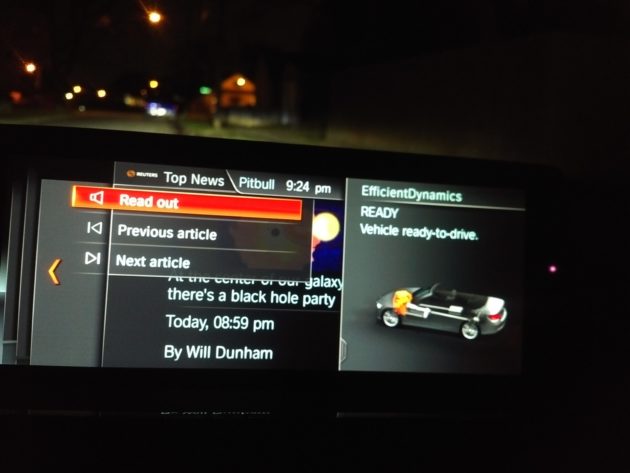
I saved the worst for last: the way it drives.
BMW listened to its mainstream audience, sadly, and replaced its world-class steering with a low-effort, high-slop feel that favors lightness and smoothness over feedback. Straight-line tracking is accurate and increased assist makes it easier to maintain direction on the highway with one finger, but the sporty heft and stream of communication that made a BMW feel like a BMW have sadly disappeared.
And the blame can’t be placed entirely on the switch to electric-assist steering as Porsche and Mazda have cracked the code, making it nearly as enjoyable as a traditional hydraulic setup. There appears to be, at least when it comes to electric steering systems, a lack of engineering talent at BMW.
Same goes for the brakes. When I pulled out of the dealership I thought for a moment that maybe there was something wrong with the car. I even looked underneath to make sure the pedal wasn’t being strangled by a misaligned floor mat.
Instead of the firm, solid braking feel of my E93 and my older E46, there was a progressive mush as the pedal oozed downward, like stepping on a fresh dog turd. Stopping distances didn’t seem to be any shorter; it just feels a bit lifeless while coming to a stop.
Though actual performance metrics are competitive with a 248hp turbo-four that exceeds the output of the old 240hp inline-6 and grip that remains on par with its predecessors, driving engagement has diminished in favor of daily comfort.
Part of what makes operating an automobile entertaining is the physical connection between man and machine — knowing what the tires are doing at all times through the steering wheel, hearing and feeling the vibrations of the engine, having a high-bandwidth connection between your foot and the brake pistons, and being in the pocket of the car’s rotational center as you move through a curve.
It doesn’t matter how quickly a hunk of metal stops and goes if none of those finer qualities are present. This is why despite being relatively slow with low adhesion limits, drivers adore cheap and cheerful cars like the Mazda Miata.
What we’re left with, then, is a German version of the Chrysler Sebring, big on looks and comfort with everything else a low priority.
The company has the balls to continue calling itself a purveyor of “Ultimate Driving Machines” but as its audience widens, BMW’s increasingly older, wealthier, and fatter customers have complained about heavy steering, grabby brakes, firm rides, and firm seats.
In other words, the average American BMW buyer really wants a Lexus, but with BMW’s styling.
I come across like an aging U2 fan who refuses to see them live because everything they released after the mid-1990s is a sad, distant echo of what the band once was (which is true). But like music, fine cars are about experiences, not metrics. It doesn’t matter how many records a band sells if their songs are derivative trash.
Effectively, BMW has become the Nickelback of the auto industry.
At nearly $58,000 for this not quite fully loaded example, it’s a lot to ask for a pleasant but uninspired driving experience. If motoring pleasure is your highest priority, look to Cadillac and Jaguar.
PROS:Supportive seats, infotainment system, styling, overall build quality, excellent customer service from BMW USA and local dealers (Erhard in Bloomfield Hills), fuel economy (24/34 mpg), available AWD, user-friendly everyday comfort.
CONS: Numb steering, mushy brakes, coarse 4-cylinder noise at WOT, economy-obsessed transmission can be reluctant to shift down, out of warranty repair costs.
Leave a Reply